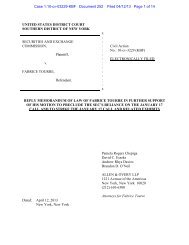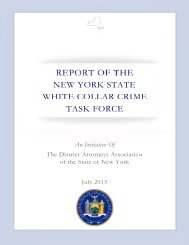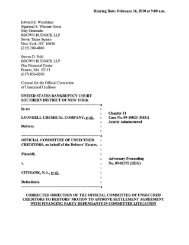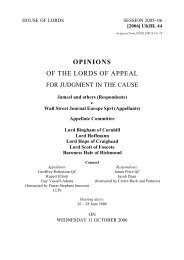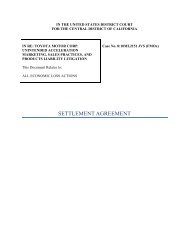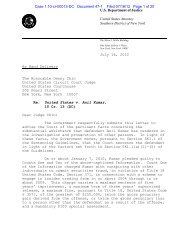Salz Review - Wall Street Journal
Salz Review - Wall Street Journal
Salz Review - Wall Street Journal
Create successful ePaper yourself
Turn your PDF publications into a flip-book with our unique Google optimized e-Paper software.
<strong>Salz</strong> <strong>Review</strong><br />
An Independent <strong>Review</strong> of Barclays’ Business Practices<br />
110<br />
of Barclaycard, in addition to Sir Hector Sants as Head of Compliance, and<br />
Shaygan Kheradpir as Chief Operations and Technology Officer.<br />
9.50 Particular consideration should be paid to ensuring that the CRO and Head of<br />
Compliance have the status among senior leaders so that their views are adequately<br />
taken into account. The primary responsibility for this must rest with the Group<br />
Chief Executive. The presence of control function leaders in the Group ExCo and in<br />
similar ExCos at business unit level will typically help to achieve a wider focus from<br />
all participants. The ExCo Chairmen at business unit level have an important role in<br />
ensuring that their ExCo is a meaningful part of the Group governance structure,<br />
with responsibilities for the overall Group’s success. The Chairman’s role in leading<br />
an ExCo should be reflected in his performance review and, as regards the Group<br />
ExCo, the Barclays Board should extend the annual Board evaluations to cover its<br />
oversight of the Group ExCo’s effectiveness.<br />
9.51 In making these suggestions we are less concerned about the formal governance<br />
framework for the executive team. Some organisations prefer an ExCo with<br />
collective decision rights; others, including the Barclays Group ExCo, reserve<br />
decision making for the Chief Executive. Some Chief Executives may prefer to have<br />
different groups of executives for Group Centre issues than for operational business<br />
issues. What matters is that the leadership group, and the Chief Executive in<br />
particular, is truly open to challenge and debate, that the right people are included in<br />
those debates, and that the team develops consistency in the management of<br />
the Group.<br />
Recommendation 10: Cohesive executive team<br />
The Group Chief Executive should be responsible for building a cohesive<br />
senior executive team which actively contributes to decision making through<br />
open debate and challenge. This should be reflected in his performance reviews<br />
and in the performance reviews of the senior executive team. The Board should<br />
regularly review the effectiveness of the senior executive team.<br />
Group Chief Executive Succession Planning<br />
9.52 The board has a primary role in choosing the chief executive. For as long as it has<br />
confidence in that chief executive and his team, it will tend to support him, while<br />
challenging particular proposals and regularly reviewing performance. Getting the<br />
appointment of the chief executive right is therefore very important, and so is the<br />
board’s process of developing succession plans in advance of any appointment.<br />
Done well, succession processes identify the skills and capabilities needed for the<br />
success of the organisation well ahead of a possible appointment, enable long-term<br />
development of future leaders internally and identify possible candidates externally at<br />
an early stage. For a universal bank like Barclays, it involves choosing the best person<br />
available in the world.<br />
9.53 In making its choice of Group Chief Executive, the Barclays Board should be<br />
mindful not just of the quality of candidates as individuals and their track records,




